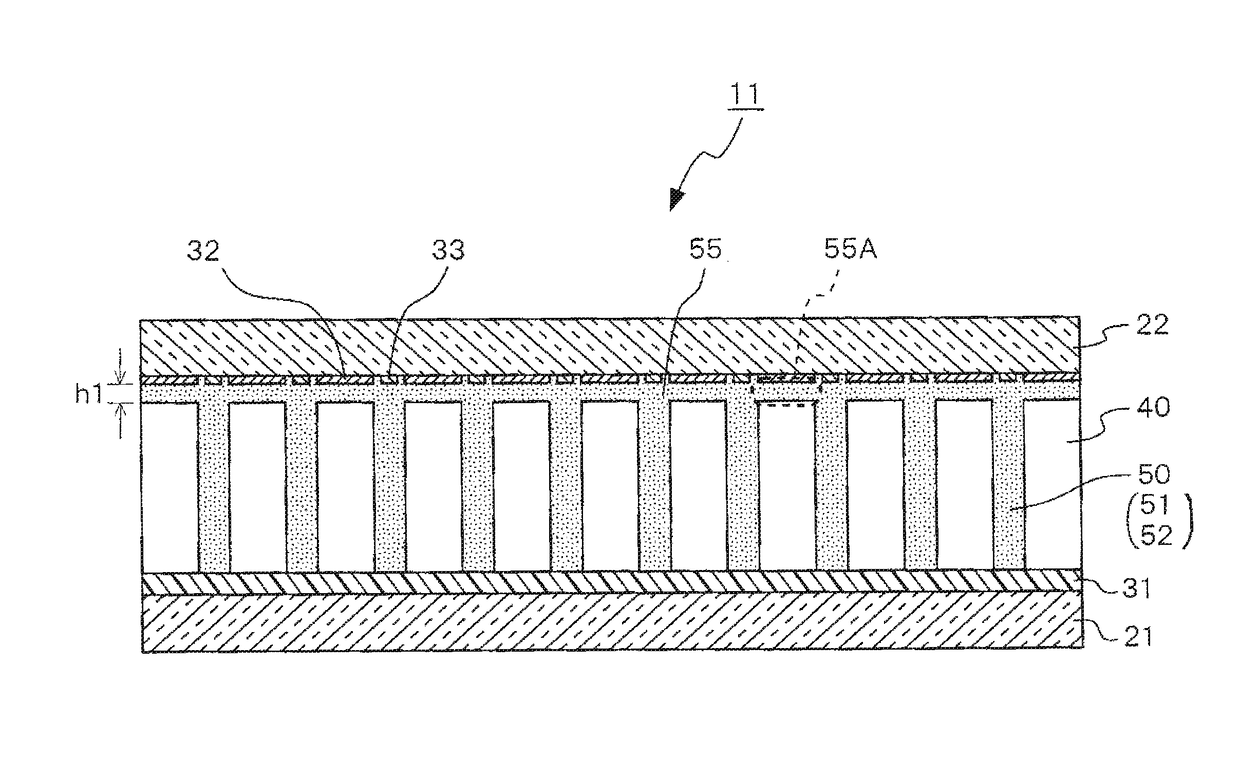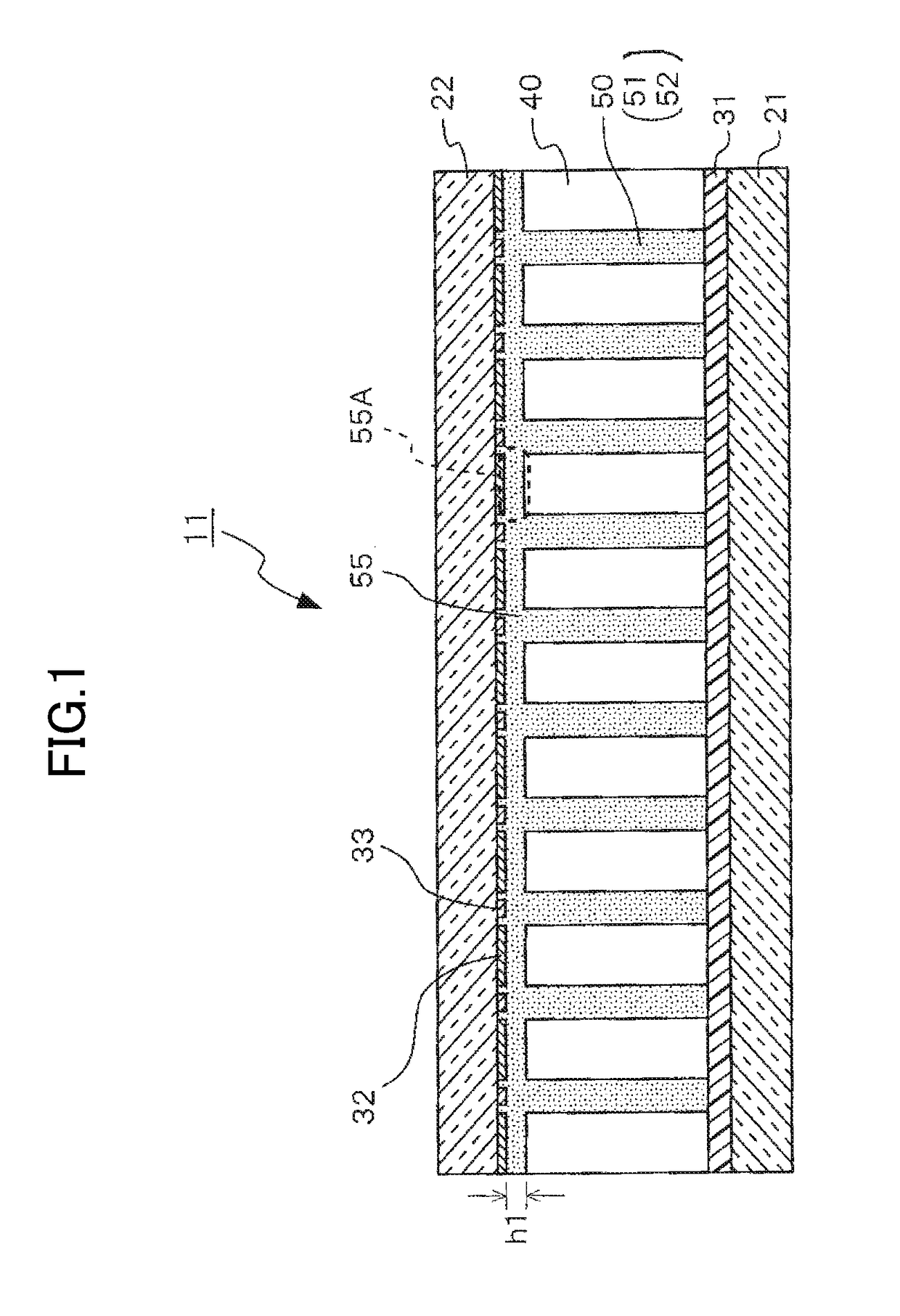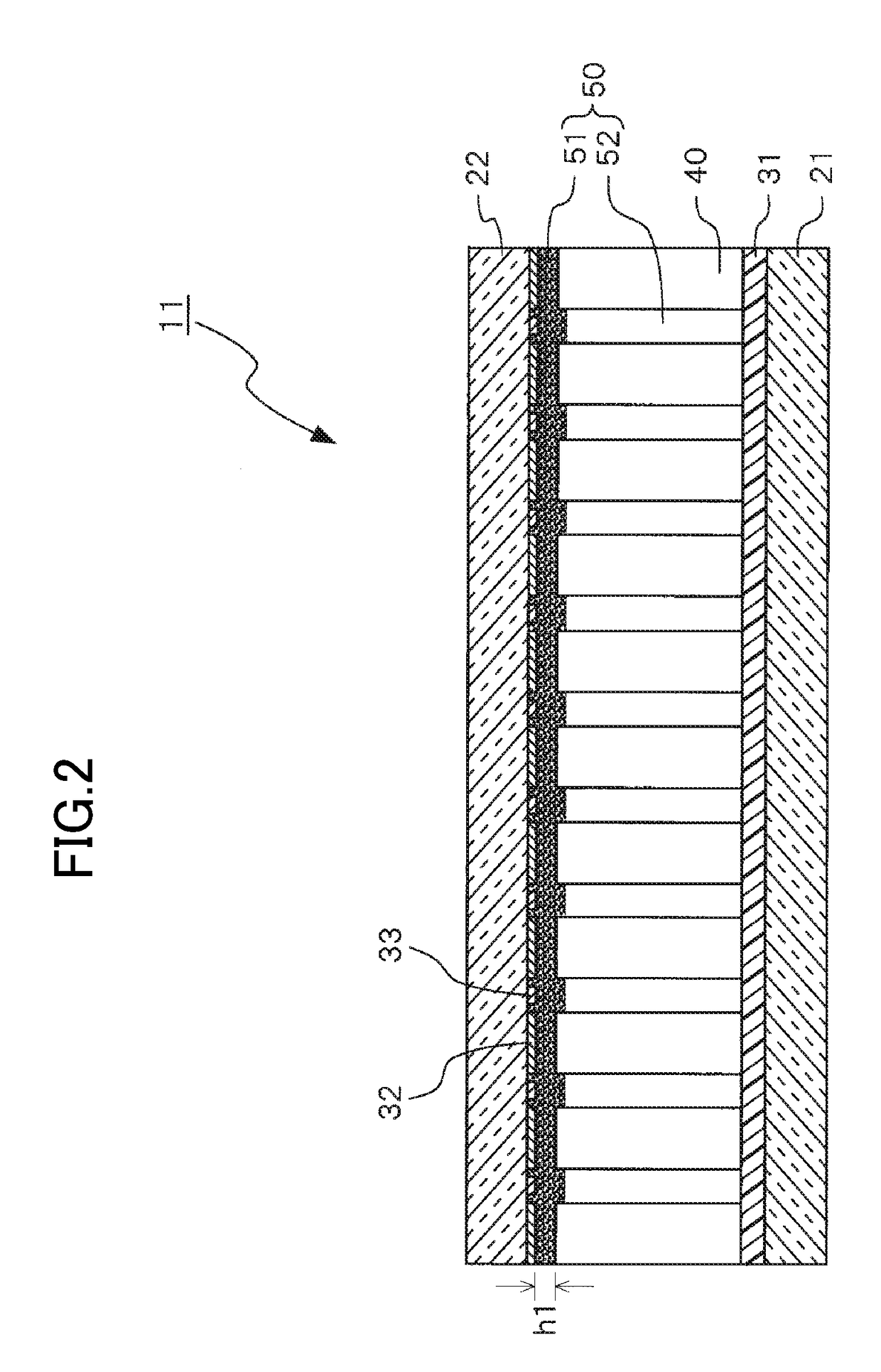Light-modulating element and smart glass
a technology of light-modulating elements and smart glass, which is applied in the direction of static indicating devices, instruments, non-linear optics, etc., can solve the problems of insufficient acquisition of light-modulating functions, deterioration of visibility through glass, and inability to achieve light-modulating functions that protect the light-modulating function. , to achieve the effect of effective adjustment and control of the transmission sta
- Summary
- Abstract
- Description
- Claims
- Application Information
AI Technical Summary
Benefits of technology
Problems solved by technology
Method used
Image
Examples
first embodiment
[0059]A first embodiment of a light-modulating element according to the present invention will be described by referring to FIG. 1 to FIG. 19.
(Basic Structures)
[0060]As shown in FIG. 1, a light-modulating element 11 according to the first embodiment includes: a first transparent substrate 21; a first transparent electrode 31 formed on the surface of the first transparent substrate 21; a plurality of light transmissive regions 40 formed to be isolated from each other on the surface of the first transparent electrode 31; a second transparent substrate 22 counter-disposed on the upper side of the light transmissive region 40 by sandwiching an air gap 55A on each of the light transmissive regions 40; a plurality of second transparent electrodes 32 disposed on the second transparent substrate 22 at positions corresponding to each of the light transmissive regions 40; a plurality of third transparent electrodes 33 disposed between each of the second transparent electrodes 32; and an elect...
second embodiment
[0145]A second embodiment of the light-modulating element according to the present invention will be described by referring to FIG. 20. Same reference numerals are to be used for the structural members equivalent to those of the first embodiment described above, and explanations thereof are omitted.
[0146]As shown in FIG. 20, a light-modulating element 12 according to the second embodiment has a feature in respect that there is a first interlayer insulating film (an on-first-electrode insulating film) 61 disposed between the first transparent electrode 31 and the light transmissive regions 40. In this respect, it is different from the first embodiment described above.
[0147]The film thickness of the first interlayer insulating film 61 is preferable to fall within a range of 10 nm to 1000 nm. In the second embodiment, it is formed to have the film thickness of 100 nm.
[0148]As the structural material of the first interlayer insulating film 61, it is possible to use a silicon oxide film,...
third embodiment
[0151]A third embodiment of the light-modulating element according to the present invention will be described by referring to FIG. 31. Same reference numerals are to be used for the structural members equivalent to those of the second embodiment described above, and explanations thereof are omitted.
[0152]As shown in FIG. 31, a light-modulating element 16 according to the third embodiment has a feature in respect that there is a fourth interlayer insulating film (an on-second-and-third-electrodes insulating film) 64 disposed on the surfaces of the second transparent electrodes 32 and the third transparent electrodes 33 in addition to the first interlayer insulating film (the on-first-electrode insulating film) 61 disposed between the first transparent electrode 31 and the light transmissive regions 40. In this respect, it is different from the second embodiment described above.
[0153]The film thickness of the fourth interlayer insulating film 64 is preferable to fall within a range of...
PUM
| Property | Measurement | Unit |
|---|---|---|
| thickness | aaaaa | aaaaa |
| thickness | aaaaa | aaaaa |
| height | aaaaa | aaaaa |
Abstract
Description
Claims
Application Information
 Login to View More
Login to View More - R&D
- Intellectual Property
- Life Sciences
- Materials
- Tech Scout
- Unparalleled Data Quality
- Higher Quality Content
- 60% Fewer Hallucinations
Browse by: Latest US Patents, China's latest patents, Technical Efficacy Thesaurus, Application Domain, Technology Topic, Popular Technical Reports.
© 2025 PatSnap. All rights reserved.Legal|Privacy policy|Modern Slavery Act Transparency Statement|Sitemap|About US| Contact US: help@patsnap.com



